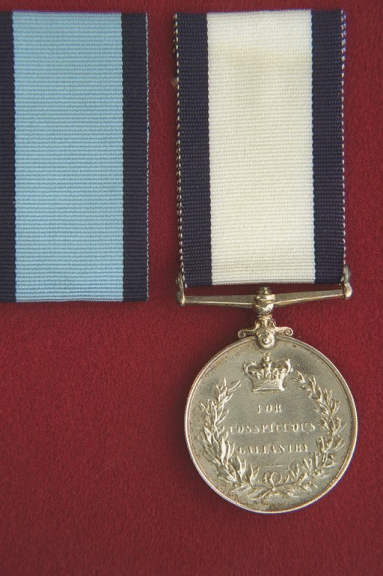Context
The Conspicuous Gallantry Medal (CGM) was introduced on 07 July 1874. The CGM was amended when the Distinguished Service Medal (DSM) was introduced on 14 October 1914.
Eligibility and Criteria
The medal was awarded to Chief Petty Officers (CPOs), Petty Officers and non-commissioned members of the Navy (or Army or Air Force personnel of equal rank serving with the fleet) who distinguished themselves by acts of pre-eminent bravery in action with the enemy.
Description
The medal is circular, silver, 1.42 inches in diameter. For mounting, a straight suspender is fastened to the medal with a single-toe claw.
The obverse displays a crowned effigy of King George VI facing left, and the legend: GEORGIVS VI D: G: BR: OMN: REX ET INDIAE IMP: (for the Second World War).
The reverse shows the legend FOR/CONSPICUOUS/GALLANTRY in three lines, encircled by a laurel wreath and surmounted by an Imperial Crown.
The ribbon is 1.25 inches wide and consists of three stripes: dark blue, white and dark blue (Naval) or dark blue, sky blue, dark blue (Flying).
Bars
A silver, laurelled bar was awarded for additional acts of pre-eminent bravery.
Historical Notes
- On 13 August 1855, a modified Meritorious Service Medal (MSM) with the inscription: FOR CONSPICUOUS GALLANTRY was instituted for the Crimea War.
- CPO BERNAYS' medal was impressed on the rim in small non-serif capitals.
- AS KERWIN's medal was engraved on the rim.
- There were two CGMs issued to the Royal Canadian Navy (RCN) during the Second World War (BERNAYS and KERWIN).
- There were no awards to Canadians in the Second World War or Korea.
